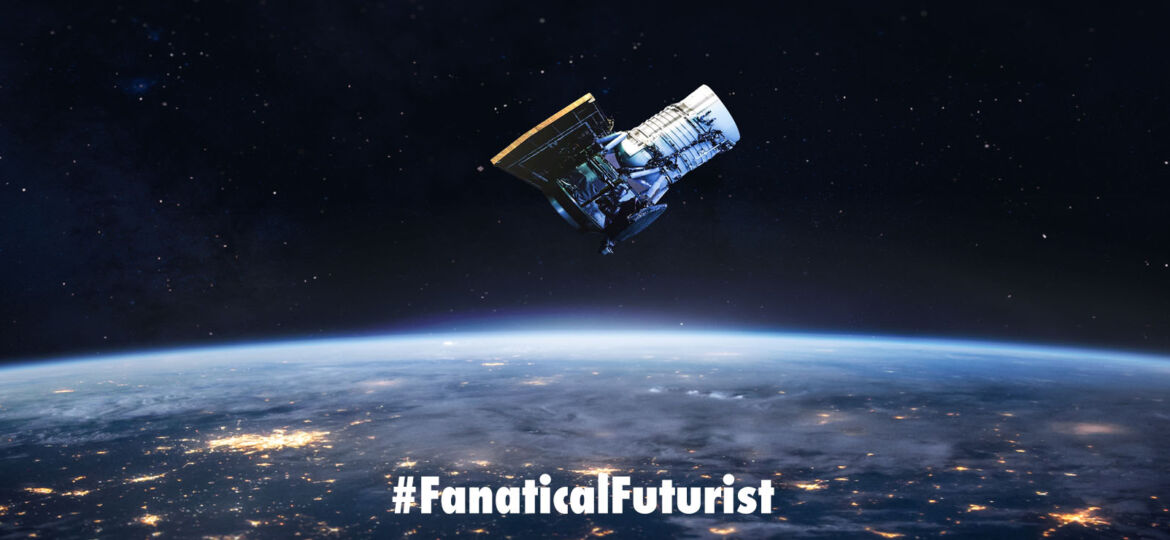
WHY THIS MATTERS IN BRIEF
3D printing products that operate in space is difficult, but entrepreneurs are slowly figuring it out and it will revolutionise the space industry.
 Love the Exponential Future? Join our FREE XPotential Community, enjoy exclusive content, future proof yourself with XPotential University, connect, watch a keynote, or browse my blog.
Love the Exponential Future? Join our FREE XPotential Community, enjoy exclusive content, future proof yourself with XPotential University, connect, watch a keynote, or browse my blog.
In the past twelve months I’ve talked a lot about companies who are 3D printing full rockets, as well as rocket engines designed by Artificial Intelligence (AI), and NASA’s plans to 3D print and 4D print self-assembling rockets and satellites in orbit. Now though, back here on Earth miniature satellite manufacturer Mini-Cubes, with the help of 3D printing service provider CRP USA, have announced they’ve developed and produced three 3D printed flight-ready “PocketQubes” which they intend on launching next year.
The mini satellites were manufactured out of a carbon fiber reinforced composite material called Windform XT and according to Mini-Cube’s statement they’re the first company in the world to use this type of material, and so far the results have been very promising.
When launched the mini cube satellites primary mission will be to study the Earth’s natural resources from space, and originally this particular project was intended as a proof-of-concept for the company’s 3D printed designs.
Joe Latrell, CEO of Mini-Cubes, had his first run-in with additive manufacturing a few years ago when he was prototyping rocket fins for his former aerospace employer, then, seeking to leverage the technology again he turned to CRP USA to 3D print the frames of his new satellites.

The new 3D printed satellite
“We wanted to include a camera for visual observation, just to see if it could be done. If the process works, we can use the technology to create a constellation of PocketQube satellites just for monitoring a specific resource. In our case, that resource is water,” says Latrell, before adding that the two main challenges faced in the development stage were miniaturization and material compatibility.
Latrell, in his initial vision, pictured a satellite with an internal volume of just 50 x 50 x 50mm. Within its chamber would be a camera, a radio system, and all the electronics required to monitor Earth from several hundred miles away.
The manufacturing of the external shell was no easy feat either, as a failure in one part meant the failure of the whole spacecraft. After much deliberation with CRP USA, Latrell eventually decided on carbon fiber reinforced Windform XT, a material that strikes a great balance between mechanical properties and printability.
“The combination of strength and ease of use made the material a natural choice for us to print these satellites. We knew we wanted to use additive manufacturing for the satellites but understood that it would be hard to find something that would work in the harsh environment of space and that’s where the Windform material came in.”
Two of the satellites are being used for testing while the final one will be sent up into orbit early next year. Mini-Cubes claims the prototypes have already passed a number of tests thrown at them, such as a 20kg load test, a NASA GEVS-7000 specification vibration test, and a vacuum test. The PocketQubes have also survived temperatures between 50°C and -40°C and now all that remains is to see what happens when they enter the cold harsh vacuum of space …

















[…] Recently I’ve been writing about the myriad of new methods companies are dreaming up to help get cargo and satellites, as well as humans, into space that include everything from using commercial aircraft and fancy centrifugal launch systems, to new “impossible” propulsion systems so we can travel the world at hypersonic speeds, take our vacations in space hotels, and live on the Moon. And now there’s a new entrant looking to make its own mark in the alternative launch sector after US based firm Aevum unveiled a new massive autonomous drone called the Ravn X that’s designed to act as an airborne launch system for small satellites. […]